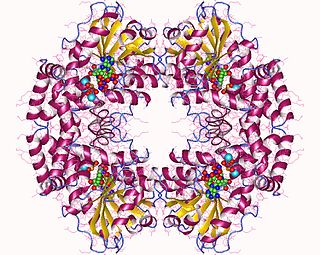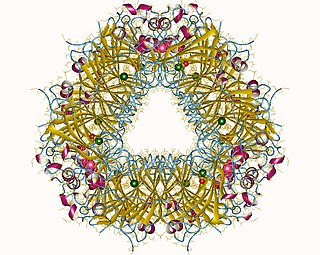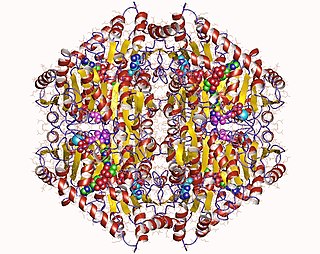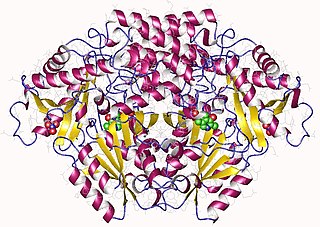| acetolactate decarboxylase | |||||||||
|---|---|---|---|---|---|---|---|---|---|
| Identifiers | |||||||||
| EC no. | 4.1.1.5 | ||||||||
| CAS no. | 9025-02-9 | ||||||||
| Databases | |||||||||
| IntEnz | IntEnz view | ||||||||
| BRENDA | BRENDA entry | ||||||||
| ExPASy | NiceZyme view | ||||||||
| KEGG | KEGG entry | ||||||||
| MetaCyc | metabolic pathway | ||||||||
| PRIAM | profile | ||||||||
| PDB structures | RCSB PDB PDBe PDBsum | ||||||||
| Gene Ontology | AmiGO / QuickGO | ||||||||
| |||||||||
The enzyme acetolactate decarboxylase (EC 4.1.1.5) catalyzes the chemical reaction
- (S)-2-hydroxy-2-methyl-3-oxobutanoate (R)-2-acetoin + CO2
Hence, this enzyme has one substrate, (S)-2-hydroxy-2-methyl-3-oxobutanoate, and two products, (R)-2-acetoin and CO2. [1]
This enzyme belongs to the family of lyases, specifically the carboxy-lyases, which cleave carbon-carbon bonds. The systematic name of this enzyme class is (S)-2-hydroxy-2-methyl-3-oxobutanoate carboxy-lyase [(R)-2-acetoin-forming]. Other names in common use include alpha-acetolactate decarboxylase, and (S)-2-hydroxy-2-methyl-3-oxobutanoate carboxy-lyase. This enzyme participates in butanoate metabolism and c5-branched dibasic acid metabolism.










